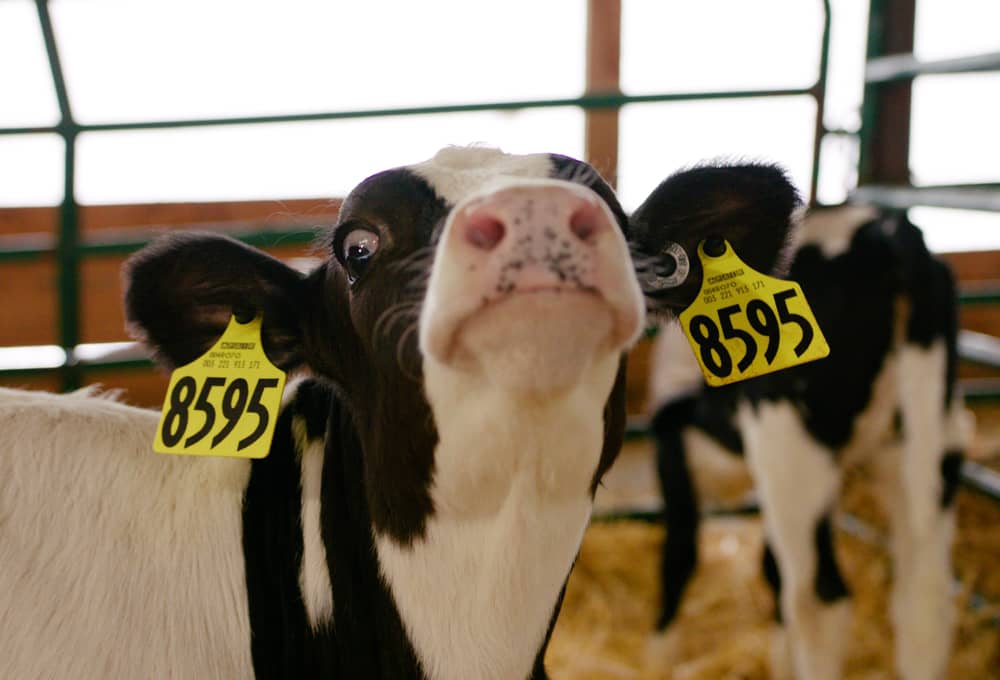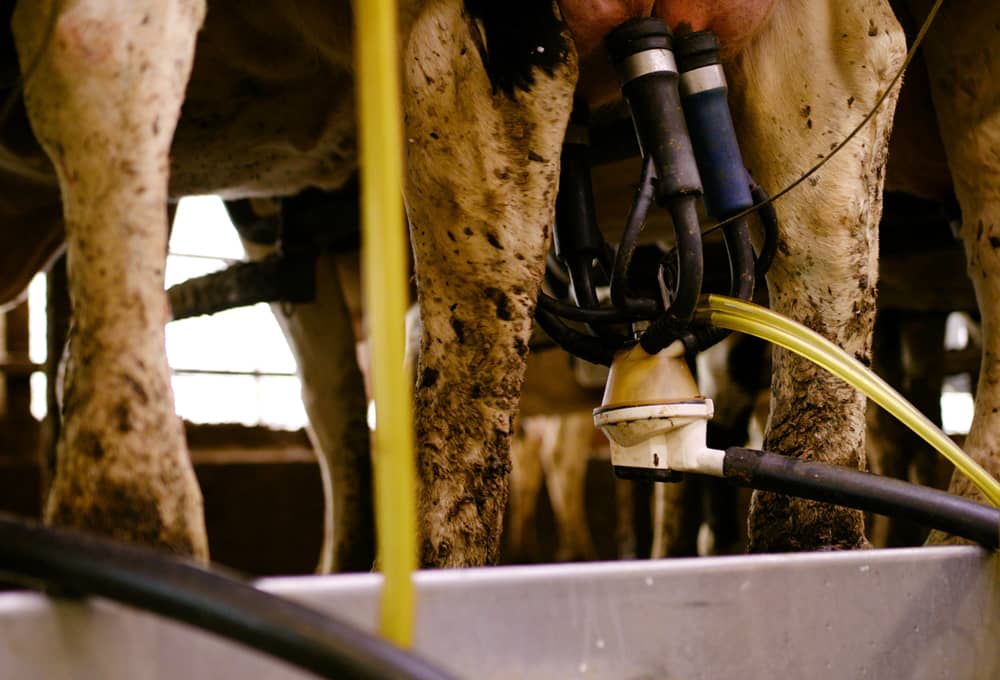Dairy Cattle
About Dairy Cattle
There are many different breeds of dairy cattle around the world. In the United States, there are six main breeds. Each breed of dairy cattle produces milk but has different physical traits and temperaments. Most dairy cows in New York are Holsteins and Jerseys. Holsteins make up the largest percentage of cows used in the dairy industry.
Dairy Cattle Life Cycle
Calves

When first born, cattle are called calves. On a dairy farm, calves are removed from their mother after 24 hours and only after drinking the colostrum or milk filled with nutrients, antibodies, and tissue growth enzymes which is produced by the mother just after birth.
Once calves are removed from their mother, they are bottled fed. After a few months, calves are weaned, or not given milk in their diet, and start to eat solid feed such as grasses or feed.
Weaning
The process of weaning takes place when a farmer removes a calf from its mother and mothers milk feeding the calf only grass and feed. If a calf is not weaned, the calf and mother cow can develop health issues due to the lack of nutrients available in the bodies of both animals. Usually, dairy calves are weaned from their mother the first 24 hours they are born and from milk around six to eight weeks at which time they are feed a calf starter feed. Calf starter feed is high in nutrients and vitamins which are need to help in growth and development in developing cattle.
Heifer

After a calf matures to about a year old, they are considered heifers and are separated from the calves. Heifers are allowed to further mature to an age where they can have their first calf. Once they have been bred and had their first calf, they will be introduced to the milking herd and are no longer considered a heifer.
Cow
Once a heifer has its first calf, they begin to produce milk for their calves and are called a cow. Cows will continue to produce milk if they continue to be milked or bred every year. A cow will be bred each year and will produce milk for around 300 days or ten months. This period is called the lactation period.
After the lactation period, cows enter into a "dry period" of about 60 days or two months. This is a period when the cow does not produce milk and all the energy and nutrients consumed through their food goes to replenishing the cow's body with nutrients and weight lost due to producing milk. Once the dry period is over, a cow will be bred again, have a calf, and enter back into the milking herd.
When cows are not efficient at producing milk either due to genetics or from age, they are sold into the beef supply chain and are harvested for their protein. Dairy farmers replace these cows from calves that have been born on the farm or purchased at auction.
Male Cattle from Dairy Breeds
Males that are born to dairy breeds are called bulls. Males are either kept for breeding or are sold to beef farms.
Milking

Dairy cows are bred specifically for their milk production. Cows are milked two to three times a day. Milking is usually spaced out to give the cows around eight to twelve hours to produce and store more milk. Milk is stored in the cow's udders which is a special gland under a cow's belly. When it is time for cows to be milked, the farmer puts pressure on the teats of the cow which hang under the udder.
Historically, this work was done by hand. Today, most farmers utilize vacuum systems which allows the milking process to be much faster. As the dairy industry continues to find ways to be more efficient, some farms are now incorporating robotic milking processes.
Once the cows are milked, the milk is sent to large, chilled storage tanks called bulk tanks. From there, the milk is picked up by large tanker trucks. The trucks take the milk to transfer stations or processing plants which process the milk into bottles for consumption or other dairy foods.
Trip to the Barn
Take a virtual field trip to North Harbor Dairy, a real NY dairy farm, to learn how NY dairy cattle are raised, how cattle are cared for, and how NY dairy farmers produce high quality dairy for consumers in the Empire State.
Fun Facts
- According to the New York State Department of Agriculture and Markets, over 4,000 farms of all sizes help make New York the fourth largest producer of milk in the United States.
